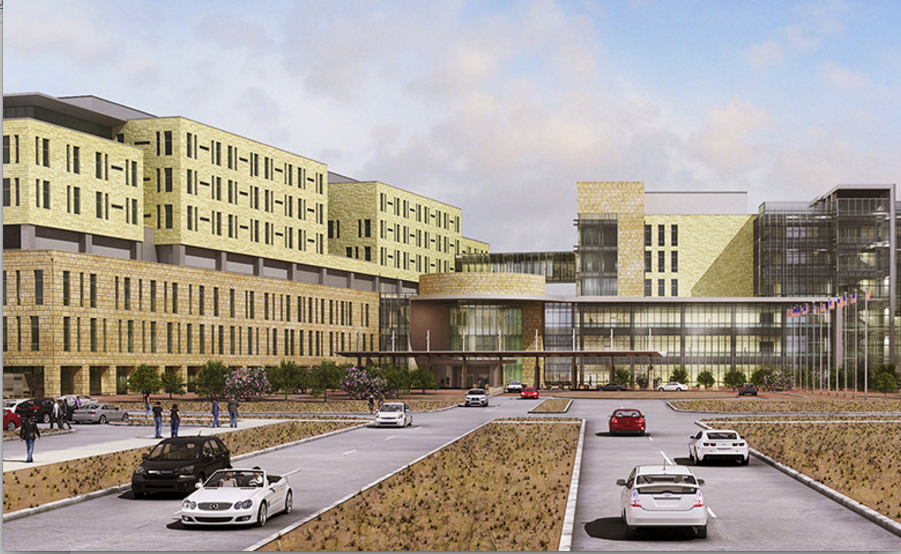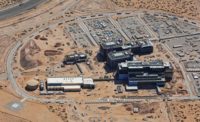How does an army hospital for veterans started with good intentions and targeted for completion in November 2016 end up $400 million over budget and almost three years late? The answer isn’t simple and the five-building Fort Bliss Hospital Replacement project in El Paso, Texas is complex. So the Defense Department's inspector general issued a timeline of the project and key entries on the timeline appear below. Some of the events mentioned in the timeline, such as the bankruptcy of the foundation pier drilling subcontractor and the replacement of the onsite project team leaders, appear in the related story about the report and the project. But the edited timeline also contains additional details about what occurred that may help explain what happens when mega-projects spin out of control. Note that the Army uses a color system—green, amber and red—to signal that an issue exists that could affect the operation or mission being carried out.
Related Article
Audit Report Details Veterans' Hospital Misfire At Fort Bliss
Early Design: 2009-20011
2009 Initial plans made for 1.1 million-sq-ft medical center
 |
| An image of the cover of the Fort Bliss Replacement Hospital construction documents and specifications prepared by HDR. |
March 2011 Schematic design and 20% design completion
April 2011 Final project planning package issued
November 2011 At 35% design completion, project is within cost and schedule requirements
2012
February-April Army reviews design submittal at 65% completion
May-June Army reviews 100% design submittal
August The medical campus design is complete
2013
January Corps awards construction contract to Clark-McCarthy joint venture
May Three losing proposer/bidders protest the award, but the Government Accountability Office denies all three protests. Notice to proceed is issued with contractual completion set for November 2016
August Construction begins
Construction Phase
May Three losing proposer/bidders protest the award, but the Government Accountability Office denies all three protests. Notice to proceed is issued with contractural completion set for November 2016
2014
February The foundation pier drilling subcontractor defaults and seeks bankruptcy protection
 |
| AMBER SIGNAL |
November An Army office changes the schedule "stop light" from green to amber
2015
January Reports from army staff state that delays to pier construction and structural steel erection will delay beneficial occupancy by 90 days
February An accident kills a worker, work stops for a month for investigation and the beneficial occupancy goal is changed from April to October 2017
March Review is made of whistleblower allegations of safety, quality control and quality assurance issues
June-July Army begins workshop on the project to create good working relationships and jointly create a problem-solving procedure to eliminate delays and costs
 |
| AMBER SIGNAL |
September The Army Health Facility Planning Office at Fort Bliss changes its signal on the project to amber
November Clark-McCarthy states that the many issues encountered were due to complications in interpretation of the design that the government was responsible for. A "get-well" plan is proposed.
2016
January Leaders of the different stakeholders decide to replace the project leaders for the Army, designer-of-record and contractor. New people take their place in March
February Project is determined to be significantly behind schedule
 |
| RED SIGNAL |
March The Health Facility Planning Office at Fort Bliss changes its signal on the project to red and the beneficial occupancy goal is changed to September 2018. The Corps defers all negotiations of discretionary change and the Fort Bliss Health Facility Planning Office cancels active changes and curtails all discretionary change procedures going forward.
June Corps of Engineers identifies a delay of 1 to 2 years and the need for another $200 million in funding
August Clark-McCarthy submits a request for a compensable time-impact delay of 21 months due to issues including seismic bracing of mechanical and plumbing piping, splice zone requirements of concrete reinforcing, structural steel erection, interior and exterior framing, structural concrete topping slabs and interdisciplinary design coordination.
2017
May The Army notifies Congress of an authorized cost increase of $245 million for a total cost of $1.2 billion
November Army and Clark-McCarthy reach agreement on request for equitable adjustment






Post a comment to this article
Report Abusive Comment